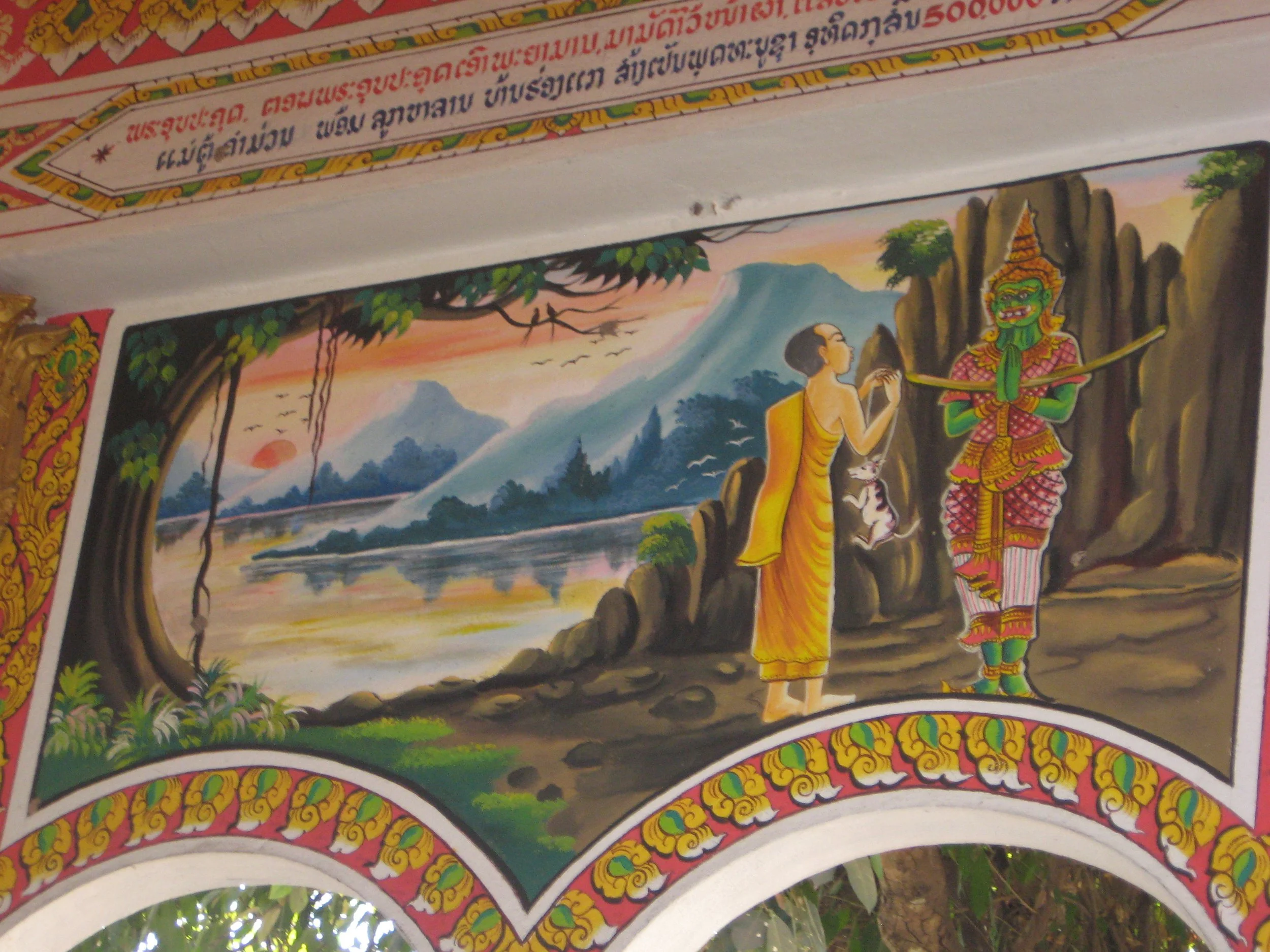Māgha Pūjā and Phra Upagutta
On Wednesday 12th February 2025 Thailand and many other Buddhist countries will celebrate Magha Puja day. This marks the full moon day of the month of Magha and as this year it falls on a Wednesday, it is also a day for Upagutta as well. This short article will explore some of the meanings and ceremonies associated with Magha Puja as well as a little background information on Upagutta as well.
Magha Puja mural - Vat That Luang Tai, Vientaine
Māgha Pūjā
Magha Puja is the full moon day of the third lunar month, following the Thai and Lao numbering method and the fifth month in Northern or Lanna Thai method. (For the calendar of dates for this year using both systems please download here ).
This date celebrates an auspicious event that happened during the first year of the Buddha’s enlightenment. On this full moon day, a gathering of 1,250 arahants occured, without being asked and all of them had been ordained by the Buddha himself. At that time the Buddha taught the Ovādapātimokkha, the fundamental rules which are taught by every Buddha, whether of the Past, Present or Future:
‘Patient acceptance is the ultimate fervor.
Extinguishment is the ultimate, say the Buddhas.
No true renunciate injures another,
nor does an ascetic hurt another.
Not to do any evil;
to embrace the good;
to purify one’s mind:
this is the instruction of the Buddhas.
Not speaking ill nor doing harm;
restraint in the monastic code;
moderation in eating;
staying in remote lodgings;
commitment to the higher mind -
this is the instruction of the Buddhas.’
Magha Puja Practices
There are a number of different ceremonies and traditional practices done on this date which vary in terms of location and history.
The most common practices for Magha Puja found across Thailand are the ceremonies promoted by King Rama IV in the middle of the 19th century. These include recitation of verses he composed and the circumambulation of temple structures such as Chedi (stupa) and Uposot whilst holding candles, incense and lotus flowers. This is usually done in the evening and is followed by typical acts of merit-making and sermons on Magha Puja.
In the North of Thailand this was also the typical time for worshiping the relics of the Buddha. Famous relics would be removed from chedi and washed and worshiped and it was also an auspicious time for ordinations.
In the North-east and in Laos this day is celebrated as Boon Khao Ji where grilled sticky rice dipped in eggs are offered to the monks in imitation of a story from the Dhammapada.
Upagutta mural - Vat That Luang Tai, Vientaine
Upagutta
As previously mentioned, this Magha Puja falls on a Wednesday and so it is also an auspicious time to worship Phra Upagutta. This is because in Northern Thailand there is a tradition that Upagutta comes on full moon Wednesdays, in a variety of forms, allowing us to make great merit if we offer to him on this day.
In the standard Thai version of the story as found in the Pathomsambodhikatha Phra Upagutta is said to be an arahant, born 100 years after the Buddha’s passing, who is still alive today and dwells in a copper palace in the ocean.
He was invited by King Asoka in order to bind Mara so that the king could complete his ambition of building 84,000 stupas for the relics of the Buddha. When Upagutta came, the King was unsure of the powers of the monk and so tested him by releasing a crazed elephant. This was frozen by Upagutta and so King Asoka knew that he had great powers.
During the ceremonies of enshrining the 84,000 relics, Mara kept on creating havoc to prevent the ceremony from taking place. Mara and Upagutta competed using their magical powers and finally Upagutta tricked Mara into accepting an illusory flower garland which was really made from the corpse of a dog. Mara tried in vain to remove the carcass and asked all the other gods for assistance to no avail. Finally he had to submit to Upagutta who bound him to a mountain with his monastic belt while the stupas were completed.
While bound, Mara reflected on the great compassion of the Buddha and aspired to achieve the path and the fruit of enlightenment. After the ceremonies were all completed, Upagutta agreed to release Mara if he would transform himself to show Upagutta how the Buddha had looked in life.
Following the example of this story, it is still common practice to invite Phra Upagutta, before starting a festival, to ensure that Maras do not cause troubles with proceedings, throughout the North and Northeast Thailand as well as Laos.





